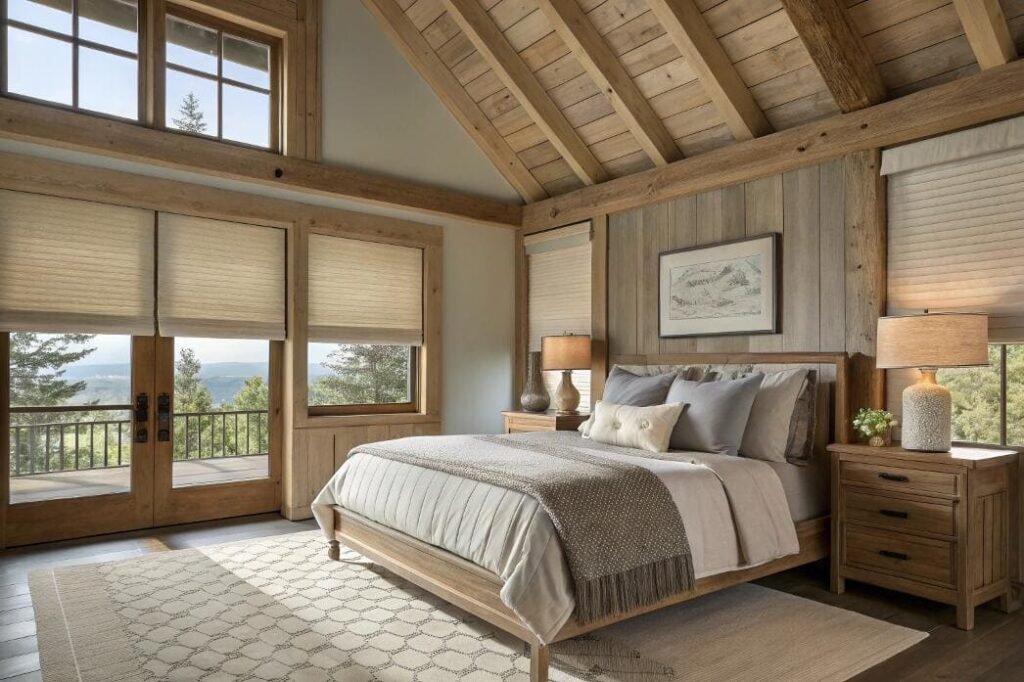Your blinds look fine from across the room, but closer inspection reveals fading, warping, and operation problems that impact your property’s value. After installing thousands of window treatments, I’ve learned to spot the warning signs early.
Replace window blinds when you notice visible damage like broken slats or fading, operation difficulties requiring excessive force, safety hazards from damaged cords, energy efficiency losses through poor insulation, or when maintenance costs exceed 40% of replacement value annually.
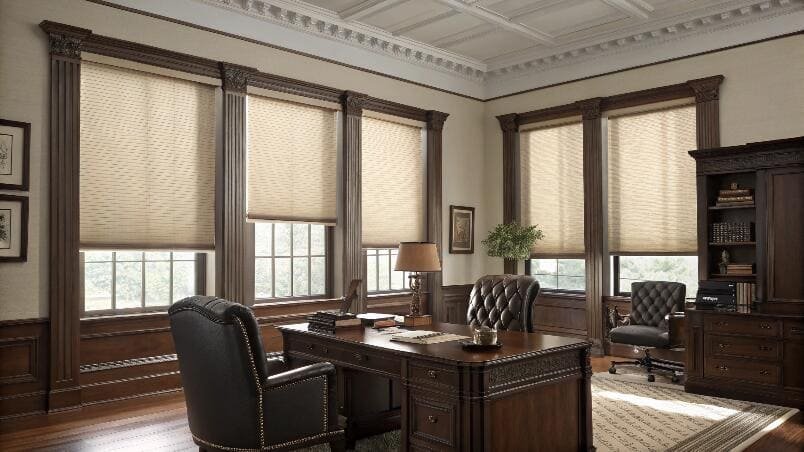
Recognizing these replacement signals early prevents costly emergency situations and maximizes your return on investment. Let me walk you through exactly what to watch for and when action becomes financially prudent.
When should you replace your blinds?
Timing blind replacement correctly balances performance degradation against replacement costs, but specific warning signs indicate when postponing action becomes more expensive than upgrading.
Replace blinds immediately when safety hazards emerge from damaged cords or broken components, when operation requires excessive force indicating mechanism failure[^1], or when energy costs increase due to poor insulation performance. Additionally, replace blinds proactively when annual maintenance exceeds 40% of replacement cost.
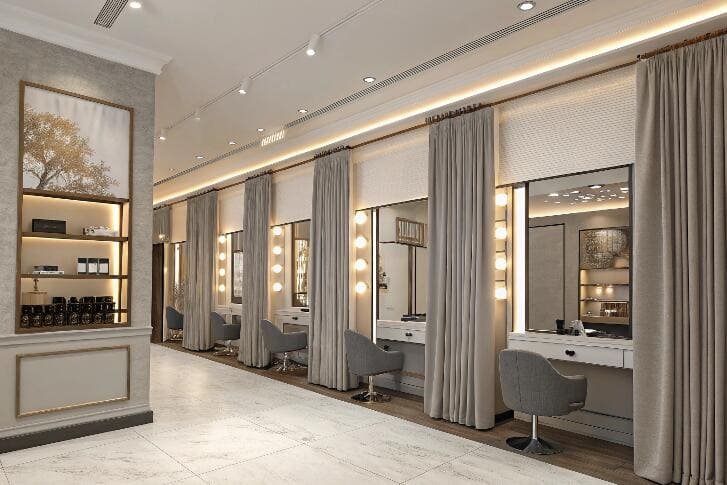
The decision framework I use with clients considers both immediate safety concerns and long-term economics. Safety issues never wait – damaged cords pose strangulation risks, while broken slats create sharp edges and falling hazards that require immediate attention.
Operational difficulties signal internal mechanism wear that only worsens with continued use. When blinds require two-handed operation or excessive force to raise and lower, the lifting systems have degraded beyond simple adjustment. Continued operation in this state accelerates wear and often leads to complete failure within 3-6 months.
Energy performance degradation becomes measurable through utility bill analysis[^2]. Blinds losing insulation value through worn fabrics or poor sealing allow increased heat transfer, forcing HVAC systems to work harder. A 15-20% increase in seasonal energy costs often indicates window treatment failure requiring replacement.
Visual deterioration impacts property value[^3] and professional appearance. Fading, discoloration, or warping creates negative first impressions that affect tenant satisfaction and property marketability. While not immediately critical, these issues justify replacement when combined with other factors.
Cost analysis provides the final decision criterion. When annual maintenance, repair, and energy loss costs exceed 40% of replacement value, economic logic favors upgrading to new systems. This calculation includes cleaning services, repair parts, and quantified energy waste from poor performance.
Regular inspection schedules help identify problems early. Monthly visual checks catch developing issues before they become critical. Quarterly operation testing reveals mechanism problems while still manageable. Annual professional assessments provide comprehensive condition reports for long-term planning.
What is the average lifespan of blinds?
Blind longevity varies dramatically based on construction quality, environmental conditions, and usage patterns, with commercial applications experiencing different wear rates than residential installations.
Quality blinds typically last 7-12 years in residential applications and 5-8 years in commercial environments. However, budget blinds may require replacement within 3-5 years, while premium systems can exceed 15 years with proper maintenance. Daily operation cycles significantly impact actual lifespan.
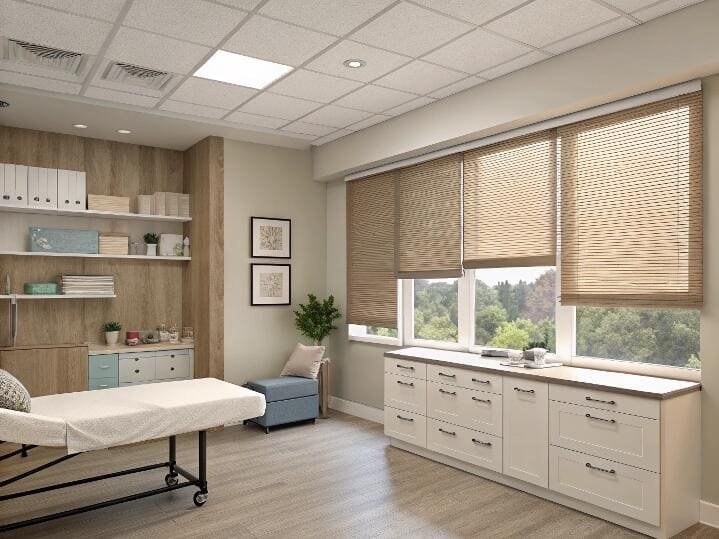
Material composition directly influences longevity expectations across different blind types:
Aluminum Horizontal Blinds:
Standard aluminum blinds average 8-10 years in residential use, with commercial applications reducing lifespan to 5-7 years due to increased operation frequency. Premium powder-coated finishes extend durability 15-20% over basic painted surfaces.
Wood and Faux Wood Blinds:
Real wood blinds last 10-15 years with proper care but prove vulnerable to moisture and temperature fluctuations. Faux wood alternatives achieve similar lifespans while offering better dimensional stability and moisture resistance.
Fabric Roller Blinds:
Quality roller blinds average 6-9 years, with fabric choice significantly impacting durability. UV-resistant materials maintain appearance and function longer than standard fabrics, particularly important for sun-facing installations.
Cellular/Honeycomb Shades:
Premium cellular shades achieve 8-12 year lifespans despite their complex construction. However, budget versions may fail within 4-6 years due to inferior materials and manufacturing tolerances.
Environmental Impact Factors:
Sun exposure accelerates material degradation 20-30% annually for south and west-facing installations. UV radiation breaks down fabric fibers and fades colors, requiring more frequent replacement in high-exposure locations.
Humidity extremes cause dimensional instability in wood products and promote mold growth in fabric systems. Coastal locations or buildings with poor climate control experience 15-25% shorter blind lifespans due to moisture stress.
Temperature fluctuations create expansion-contraction cycles that stress mounting hardware and create component fatigue. HVAC systems cycling frequently or buildings with poor thermal control accelerate blind aging.
Usage Pattern Analysis:
Residential blinds operated 2-4 times daily typically achieve full lifespan potential. Commercial applications with 8-15 daily cycles reduce expected life 25-35% through mechanical wear acceleration.
Heavy-use areas like conference rooms or retail spaces may require replacement every 3-4 years regardless of material quality due to constant adjustment demands.
What is the average cost to replace blinds?
Replacement costs vary significantly based on blind type, window size, and installation requirements[^4], with budget options starting around $50 per window and premium systems exceeding $500 per window.
Standard blind replacement averages $150-400 per window including installation, with basic aluminum blinds costing $75-150, mid-range wood blinds running $200-350, and premium motorized systems reaching $400-800 per window. Commercial projects benefit from volume pricing reducing per-unit costs 15-25%.
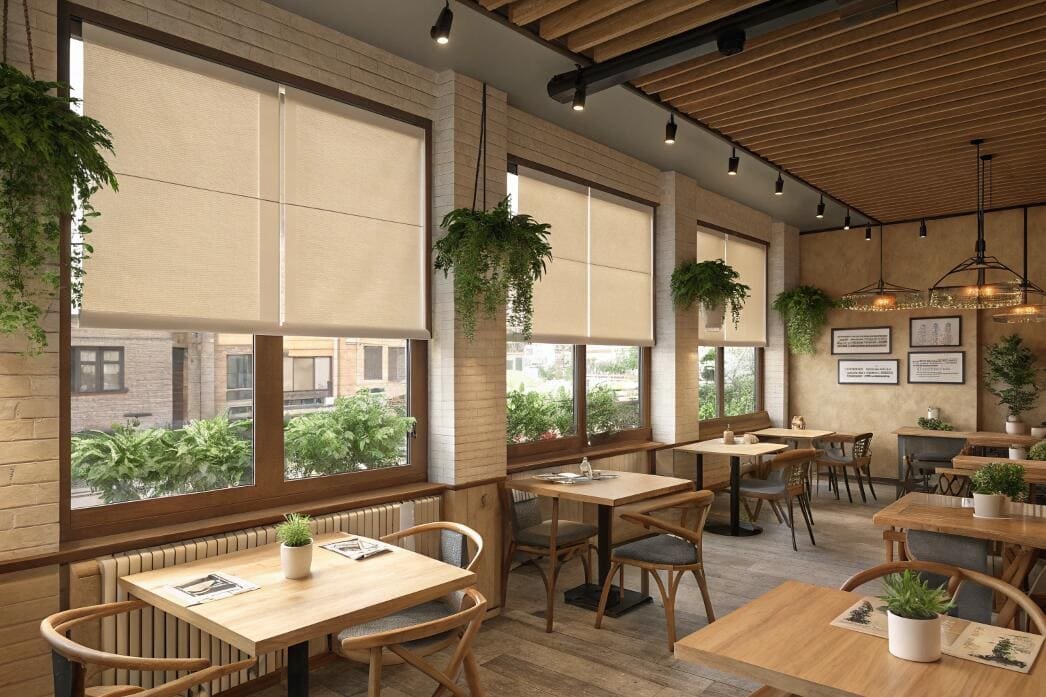
Cost Structure Analysis:
Basic Tier Replacement ($75-200 per window):
Standard aluminum horizontal blinds, basic roller shades, and entry-level cellular shades fall into this category. These options provide functional window coverage with limited customization and standard installation methods.
Installation typically adds $35-75 per window depending on complexity and accessibility. Basic installations on standard windows require 15-30 minutes per unit, while specialty shapes or difficult access points increase labor costs.
Mid-Range Replacement ($200-400 per window):
Wood blinds, quality cellular shades, and custom roller blinds occupy the middle market segment. These systems offer better durability, enhanced aesthetics, and moderate customization options.
Professional installation becomes more critical at this level due to precise fit requirements and warranty considerations. Labor costs increase to $50-100 per window for proper alignment and operation adjustment.
Premium Replacement ($400-800+ per window):
Motorized systems, designer fabrics, and specialty configurations command premium pricing. These installations often require electrical work, smart home integration, and specialized mounting techniques.
Installation complexity can double labor costs to $100-200 per window when electrical connections, programming, and system integration are required.
Additional Cost Considerations:
Disposal of old blinds adds $15-25 per window in many markets. Permit requirements for electrical work increase costs $200-500 per project. Rush orders or custom manufacturing extend lead times and increase prices 20-30%.
Volume Impact on Pricing:
Single window replacements pay full retail pricing. Projects involving 5-10 windows typically receive 10-15% discounts. Large commercial orders exceeding 25 units can achieve 20-25% savings through wholesale pricing structures.
Financing and Payment Options:
Many suppliers offer financing for projects exceeding $2,000, spreading costs over 12-36 months. Commercial accounts often receive net-30 payment terms that improve cash flow management for larger installations.
Is it worth replacing blinds?
The value proposition of blind replacement depends on balancing upfront costs against long-term benefits including energy savings, property value increases, and maintenance cost reductions.
Blind replacement typically justifies its cost when annual maintenance exceeds $200, energy losses increase utility bills more than $300 annually, or property aesthetics significantly impact market value. ROI analysis shows positive returns within 3-5 years for quality replacements in most residential and commercial applications.
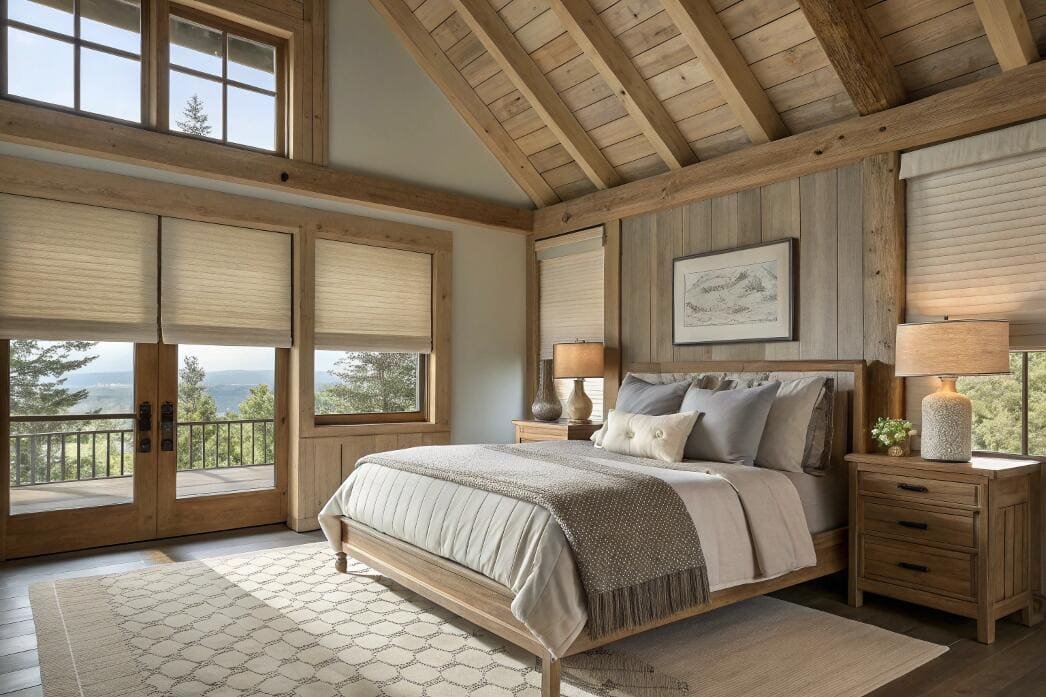
Financial Justification Framework:
Energy Efficiency Returns:
Modern blinds with improved insulation properties reduce HVAC loads 15-25% compared to worn systems. A typical residential property saves $400-800 annually through reduced heating and cooling costs with quality window treatments.
Commercial buildings see larger absolute savings due to scale. A 10,000 square foot office space often reduces energy costs $2,000-4,000 annually with upgraded window treatments, providing clear ROI justification for replacement projects.
Property Value Impact:
Updated window treatments contribute to overall property presentation and perceived value. Real estate professionals estimate that quality blinds add $1,500-3,000 to typical home values, with premium installations providing even greater returns.
Commercial properties benefit from improved tenant satisfaction and reduced turnover when modern window treatments enhance workspace comfort and functionality.
Maintenance Cost Elimination:
Old blinds requiring frequent cleaning, repair, and adjustment services can cost $150-400 annually per property. New blinds eliminate these expenses for 3-5 years, providing immediate cash flow improvement.
Functionality and Convenience Benefits:
Motorized systems eliminate daily operation effort while providing scheduling and integration capabilities that improve quality of life. While harder to quantify financially, these benefits justify replacement for many property owners seeking improved convenience.
Risk Mitigation Value:
Replacing blinds proactively prevents emergency situations that require expensive rushed replacements. Planning replacement timing allows better vendor selection, pricing negotiation, and installation scheduling.
Tax Considerations:
Commercial blind replacements often qualify as business expense deductions, reducing net cost through tax benefits. Energy-efficient systems may qualify for utility rebates or tax credits in some jurisdictions, further improving ROI calculations.
What blinds increase home value?
Property value enhancement through window treatments depends on selecting styles that appeal to broad market preferences while providing functional benefits that buyers actively seek.
Wood and faux wood blinds provide the highest property value returns, adding $100-200 per window to home values through their classic appeal and durability perception. Motorized systems in luxury properties can increase values $300-500 per window, while cellular shades add moderate value through energy efficiency benefits.
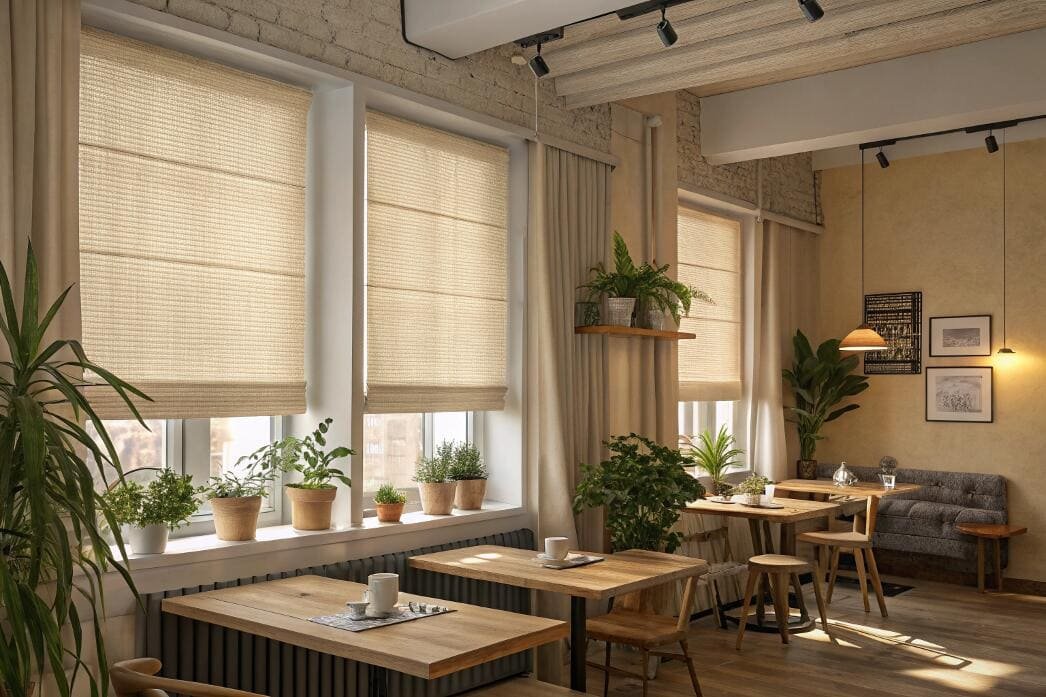
Value-Adding Blind Categories:
Wood and Faux Wood Systems:
Real wood blinds command premium market perception due to their natural materials and traditional craftsmanship appeal. Buyers consistently rate wood treatments as desirable features worth paying premiums for, particularly in mid-range and luxury properties.
Faux wood alternatives provide similar visual appeal with superior moisture resistance and lower maintenance requirements. They often deliver better long-term value than real wood in humid climates or high-use areas.
Cellular/Honeycomb Energy Systems:
Energy-conscious buyers increasingly value cellular shades for their insulation properties and utility cost reduction potential. While not as aesthetically striking as wood systems, they appeal to buyers prioritizing operating efficiency.
Motorized and Smart Systems:
Luxury property buyers expect smart home integration including automated window treatments. Motorized blinds signal modern convenience and technological sophistication that differentiates properties in competitive markets.
However, motorized systems[^5] must be properly integrated and user-friendly to add value. Complex systems that buyers cannot easily understand or operate may actually detract from property appeal.
Color and Style Considerations:
Neutral colors like white, cream, and natural wood tones appeal to broadest buyer demographics and allow flexible decorating. Bold colors or unique styles may appeal to specific tastes but can limit market appeal.
Custom-fitted systems that properly frame windows and complement architectural details add more value than standard-sized treatments that appear afterthought additions.
Quality Indicators Buyers Notice:
Smooth operation, straight alignment, and proper fit signal quality installations that buyers associate with well-maintained properties. Conversely, sagging, binding, or misaligned treatments suggest deferred maintenance and overall property neglect.
Brand recognition can influence buyer perception, particularly for motorized systems where ongoing support and replacement parts availability matter for long-term ownership.
What are the new regulations for window blinds?
Recent safety regulations address cord-related hazards and product labeling requirements, with new standards taking effect that impact both residential and commercial blind installations.
The Consumer Product Safety Commission implemented mandatory cordless requirements for most residential blinds sold after December 2018, while commercial applications must meet updated ANSI/WCMA accessibility standards. Additionally, state energy codes increasingly specify minimum thermal performance requirements for window treatments in new construction.
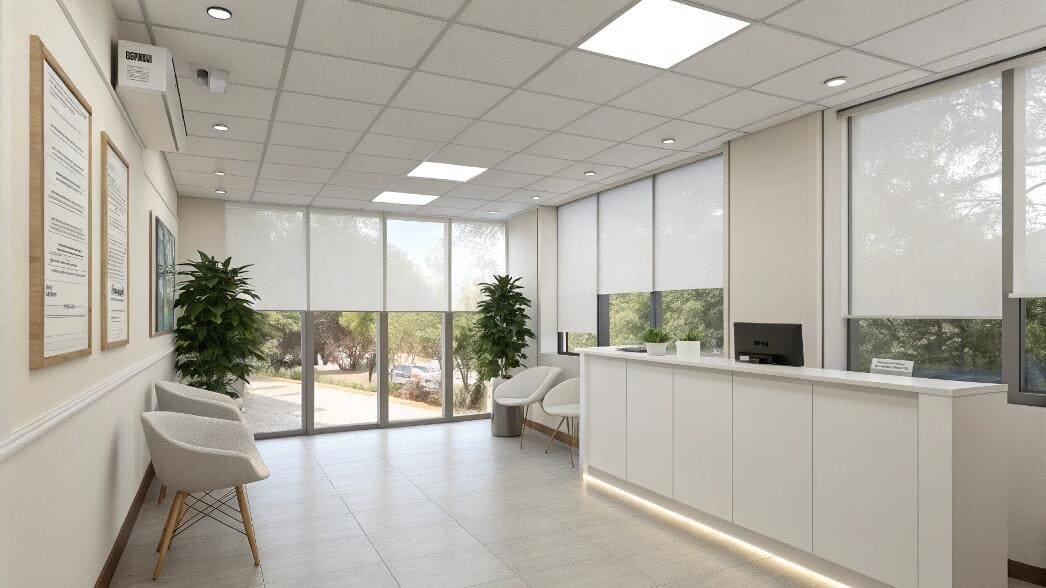
Federal Safety Requirements:
CPSC Cordless Mandate:
Residential blinds must eliminate accessible cords that pose strangulation hazards to children under 8 years old. This regulation affects custom and stock blinds in homes, requiring manufacturers to redesign lifting mechanisms for cordless operation.
Acceptable alternatives include cordless spring systems, motorized operation, or cord cleats mounted at least 96 inches above floor level. Existing installations are not required to be upgraded but replacement blinds must meet current standards.
Commercial Accessibility Standards:
Updated ANSI/WCMA standards require commercial blinds to be operable by individuals with limited mobility. Maximum operation force limits and reachability requirements affect product selection and installation methods.
ADA compliance considerations impact blind placement and control accessibility in public buildings, requiring careful coordination between architects and window treatment specifiers.
Energy Code Requirements:
Thermal Performance Standards:
Several states now specify minimum R-values or Solar Heat Gain Coefficients for window treatments in new construction. California’s Title 24 and similar codes in other states create baseline performance requirements affecting product selection.
Commercial buildings pursuing LEED certification must document window treatment thermal performance contributions to overall building energy efficiency ratings.
Labeling and Documentation Requirements:
Energy performance claims must be supported by certified testing data from accredited laboratories. Manufacturers must provide thermal performance specifications and installation guidelines to ensure code compliance.
State-Specific Regulations:
California leads with comprehensive energy requirements and safety standards exceeding federal minimums. Other states are adopting similar frameworks, creating patchwork compliance requirements for multi-state projects.
Fire Safety Standards:
Commercial applications must meet flame spread and smoke development requirements under building codes. Fabric selections and mounting methods must comply with local fire marshal specifications.
Impact on Product Selection:
These regulations eliminate some traditional blind options while driving innovation in cordless mechanisms and energy-efficient designs. Buyers must verify compliance during product selection to avoid code violations and safety liability.
What are the hidden costs of maintaining old blinds vs replacing them?
Maintaining aging blinds creates ongoing expenses that often exceed replacement costs when calculated over 2-3 year periods, with hidden costs including energy waste, decreased productivity, and emergency repair premiums.
Old blind maintenance averages $180-320 annually including cleaning, repairs, and energy losses, while replacement eliminates these costs for 5-7 years. Hidden costs include decreased property values, tenant dissatisfaction, emergency service premiums, and productivity losses in commercial spaces averaging $50-150 per window annually.
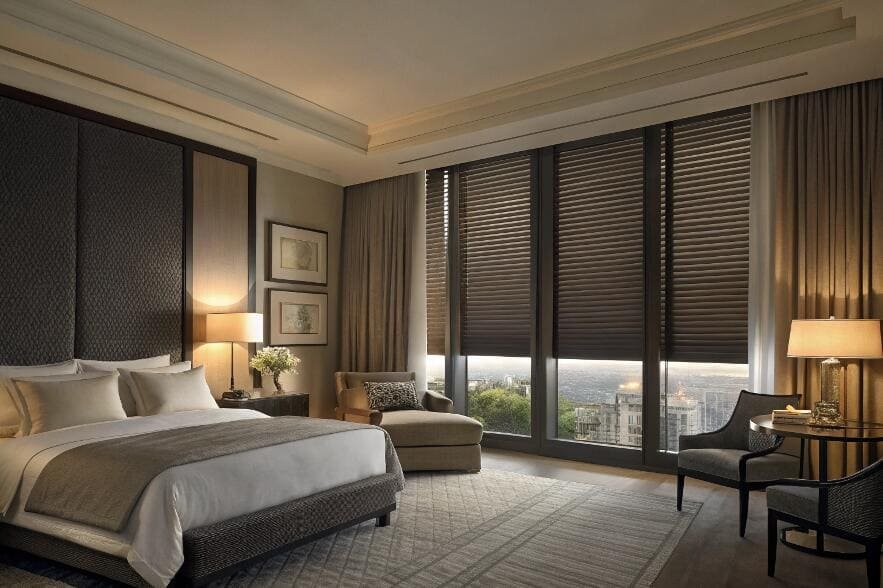
Quantified Hidden Cost Categories:
Energy Waste Calculations:
Worn blinds lose insulation effectiveness, allowing 15-25% more heat transfer than properly functioning systems. For a typical residential property, this translates to $200-500 annual utility cost increases that compound over time.
Commercial buildings experience proportionally larger energy waste. A 50-window office space with degraded blinds can waste $1,500-3,000 annually in excess HVAC costs compared to efficient replacements.
Emergency Service Premiums:
After-hours blind failures in commercial spaces require emergency repairs costing 150-200% of standard service rates. Weekend or holiday service calls average $300-500 minimum charges plus parts and labor.
Rushed replacement orders carry 25-40% price premiums when immediate delivery is required. Standard lead times of 2-3 weeks for custom blinds compress to 3-5 days with expedited manufacturing and shipping surcharges.
Productivity Loss in Commercial Spaces:
Malfunctioning blinds in office environments create productivity drains through glare problems, temperature discomfort, and operation distractions. Studies show 5-8% productivity decreases in workspaces with poor light control, translating to $2,000-4,000 annual losses per affected employee.
Conference rooms with unreliable blinds require manual adjustments during presentations, creating professional disruptions and meeting delays that impact business operations.
Cleaning Service Escalation:
Old blinds require increasingly frequent professional cleaning as dust accumulation accelerates in worn fabrics and damaged slats. Annual cleaning costs increase from $25-40 per window to $60-80 as systems age and become harder to maintain effectively.
Staining and discoloration in aging blinds often requires specialized treatment costing $40-75 per unit, with success rates declining as materials deteriorate beyond restoration capability.
Property Value Depreciation:
Worn blinds signal deferred maintenance to potential buyers or tenants, reducing property values and rental rates. Real estate professionals estimate that obviously aging window treatments decrease property values $500-1,500 in residential markets.
Commercial properties with dated or malfunctioning blinds face tenant retention challenges and rental rate pressure compared to well-maintained competing properties.
What modern features make new blinds worth the upgrade?
Contemporary blind systems incorporate advanced technologies and design improvements that deliver measurable benefits beyond basic window coverage, justifying replacement even when old systems still function.
Modern blinds offer smart home integration, energy-efficient cellular construction, cordless safety systems, UV-protective fabrics, and motorized convenience features that provide 25-40% better energy performance, enhanced safety compliance, and improved user experience compared to systems over 5 years old.
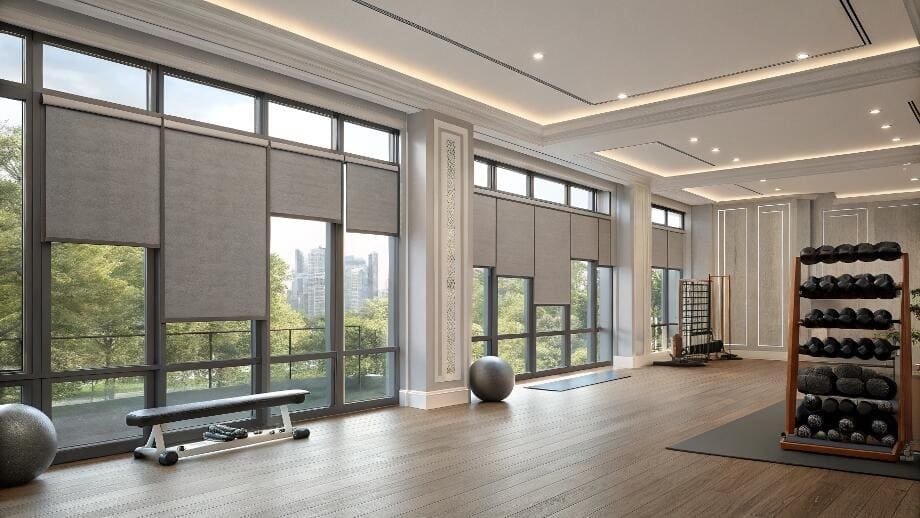
Smart Integration Capabilities:
Today’s motorized blinds integrate seamlessly with home automation systems including Alexa, Google Home, and Apple HomeKit. Scheduling functions automatically adjust blinds based on sunrise/sunset times, occupancy sensors, or temperature triggers that optimize energy efficiency without user intervention.
Commercial systems connect to building management platforms through BACnet or Modbus protocols, enabling centralized control and energy monitoring that reduces facility management workload while improving performance consistency.
Advanced Energy Technologies:
Cellular honeycomb designs now achieve R-values up to 5.0 compared to traditional blinds’ R-1.5 values, reducing HVAC loads 25-35% in typical applications. Low-E coatings on roller shade fabrics reflect infrared radiation while maintaining visible light transmission.
Automated solar tracking adjusts blind positions throughout the day to block direct sun while preserving natural light, maintaining comfortable interior conditions with minimal energy consumption.
Enhanced Safety Features:
Cordless lifting mechanisms eliminate strangulation hazards while providing smoother operation than traditional cord systems. Soft-close features prevent slamming and extend component life through controlled movement speeds.
Emergency manual overrides on motorized systems ensure operation during power outages, addressing concerns about electronic dependency in critical applications.
Improved Durability and Materials:
UV-resistant fabrics maintain color and structural integrity 50% longer than previous generations, reducing replacement frequency and lifecycle costs. Moisture-resistant treatments prevent mold and mildew in humid environments.
Precision manufacturing tolerances create better fit and smoother operation, reducing mechanical wear and extending service life 20-30% compared to older production standards.
User Experience Enhancements:
Whisper-quiet motors eliminate operation noise that disrupted meetings or sleep in older motorized systems. Battery backup options provide 6-12 months of operation without hardwired electrical connections.
Mobile app controls allow remote operation and monitoring from anywhere, enabling adjustment of home or office blinds while traveling or from different building locations.
Conclusion
Replace blinds when safety, energy, or maintenance costs justify the investment – typically every 7-10 years for quality systems.
Transform Your Space with Professional-Grade Window Treatments
Don’t let aging blinds compromise your property’s energy efficiency and professional appearance. Our specification team provides detailed replacement analysis, cost-benefit calculations, and installation coordination for your specific requirements.
Receive comprehensive project quotes, technical specifications, and timeline projections within 24 hours. We deliver the expertise and products needed to upgrade your window treatments efficiently and cost-effectively.
Connect with our replacement specialists at info@velablinds.com for immediate project consultation.
Extended FAQ Section
How do I know if my blinds need professional inspection?
Schedule professional blind inspection when you notice operation difficulties, visible damage, or energy efficiency concerns that DIY assessment cannot properly evaluate. Warning signs requiring expert evaluation include binding during operation, uneven slat alignment, frayed cords or mechanisms, significant fading or discoloration, and mounting hardware looseness. Professional inspectors use specialized tools to measure operation force, assess safety compliance, and evaluate energy performance degradation that homeowners cannot accurately gauge. They also identify potential safety violations related to cord accessibility and mounting security that could create liability issues. Commercial properties should schedule annual professional assessments to maintain safety compliance and optimize replacement timing. Inspection costs typically range $75-150 per property but prevent expensive emergency repairs and identify opportunities for energy savings through strategic replacement. Professional reports provide documentation for insurance claims, warranty issues, and capital planning that justify the inspection investment through improved decision-making and risk management.
What should I do with old blinds when replacing them?
Proper disposal of old blinds requires consideration of materials, local regulations, and potential recycling opportunities that vary significantly by blind type and geographic location. Aluminum blinds can often be recycled through scrap metal dealers or municipal recycling programs, generating $0.50-1.50 per pound in recovered value. Wood blinds may be accepted by construction waste recyclers if hardware is removed, while faux wood products typically require landfill disposal due to composite materials. Fabric components from cellular or roller shades rarely qualify for recycling and need standard waste disposal. Many blind retailers offer disposal services during replacement installation, charging $15-25 per unit but handling all removal and disposal logistics. Donation options exist for functional blinds through habitat restoration stores or charitable organizations, providing tax deduction opportunities while avoiding disposal costs. Some manufacturers operate take-back programs for their products, particularly for motorized systems containing electronic components requiring specialized handling. Check local regulations regarding construction debris disposal, as some jurisdictions require professional waste contractors for bulk blind removal from commercial properties.
Can I upgrade just the mechanisms on existing blinds instead of full replacement?
Mechanism upgrades offer limited effectiveness compared to complete blind replacement, with success depending on blind age, compatibility, and underlying structural condition. Retrofit motorization kits work best on blinds under 5 years old with properly functioning manual mechanisms and adequate mounting strength to support motor weight. Cordless conversion is possible for some horizontal blinds through spring-loaded lift systems, but requires professional installation and may void existing warranties. However, mechanism upgrades cannot address fabric degradation, slat warping, energy efficiency losses, or safety compliance issues that often drive replacement decisions. Cost analysis frequently shows complete replacement providing better long-term value than partial upgrades, particularly when factoring labor costs and limited warranty coverage on retrofit installations. Upgrading mechanisms on blinds over 7-8 years old typically proves uneconomical due to compatibility issues and remaining component lifespan limitations. Professional assessment can determine upgrade feasibility, but most experts recommend complete replacement when multiple system components show wear or when energy efficiency improvements are priority objectives.
---
[^1]: Explore the causes of mechanism failure to prevent operational issues with your blinds.
[^2]: Learn how to analyze your utility bills to identify energy inefficiencies in your home.
[^3]: Understand the impact of window treatments on property value to make informed investment decisions.
[^4]: Understanding installation requirements can help you prepare for a smooth installation process.
[^5]: Explore the convenience and modern features of motorized window blinds for your home.Partner with VelaBlinds for Your Next Project
Smart window treatments shouldn’t be complicated. After working with 500+ distributors and contractors worldwide, I’ve streamlined the process to get you quality products, competitive pricing, and reliable support – every time.
Why project professionals choose VelaBlinds:
- ✅ Fast, Accurate Quotes – Detailed specs and pricing within 24 hours
- ✅ Transparent Pricing – No hidden fees, volume discounts clearly outlined
- ✅ Quality Assurance – Direct partnerships with certified OEM manufacturers
- ✅ Project Support – Dedicated account manager from quote to delivery
Start your next project:
📧 Quick Quote: Send your requirements to info@velablinds.com
📱 Direct Contact: WhatsApp +86 137 2012 8317
🌐 Browse Solutions: https://velablinds.com/
📁 Product Resources: Access spec sheets, catalogs & project files
Jimmy Chen, Founder
"I built VelaBlinds to solve the real challenges I faced as a project buyer – long lead times, unclear specs, and unreliable suppliers. Let’s discuss how we can power your projects with smarter blinds."
Serving distributors and contractors across North America, Europe, and Australia since 2018.

